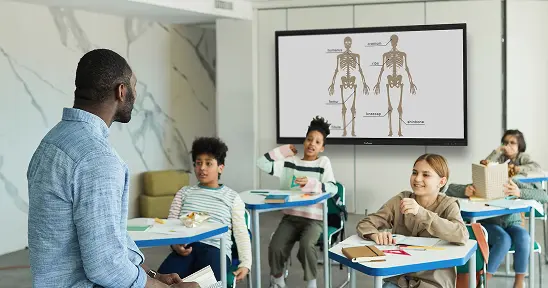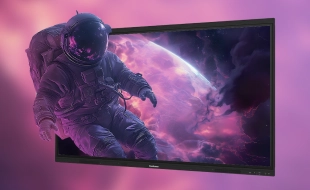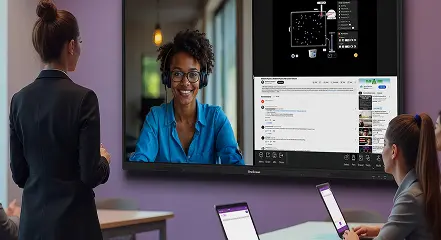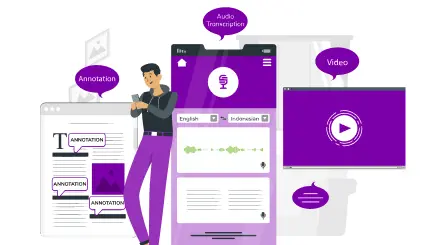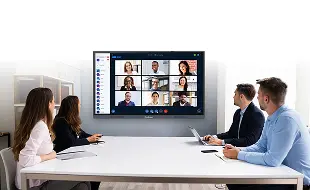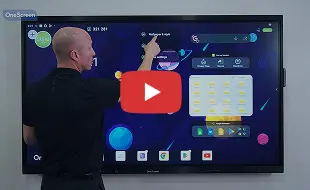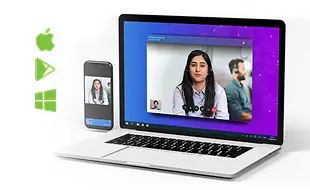 Long after this pandemic has subsided, workers will still be teleconferencing from remote locations and teachers will still be sending out video lessons. The trending data was clear before the outbreak, but it has been greatly accelerated by the greater good of social distancing.
Long after this pandemic has subsided, workers will still be teleconferencing from remote locations and teachers will still be sending out video lessons. The trending data was clear before the outbreak, but it has been greatly accelerated by the greater good of social distancing.
While some form of collaboration tech was already available at many organizations, people just weren’t prepared to do so much so fast. It’s not just a matter of having the right software and hardware in place. Having the tech is not the same as knowing how to use it effectively, which requires adequate training and support.
The Origin of OneScreen
We created OneScreen 12 years ago after we faced the same kind of struggle. I was CEO of Clary Icon, the parent company of what would become OneScreen. From our headquarters in San Diego, we had to stay in frequent contact with our regional offices in Mexico, the UAE and Pakistan. It wasn’t unusual to walk into a conference room before a video call and see our members struggle for twenty minutes trying to bring everyone on the call.
That was a huge waste for everyone involved and I knew we had to think in new ways if we wanted to fix it permanently. The obstacles included the complexity of the setup with its tangle of cables, incompatibility issues with hardware and software, and the difficulty of moving information across competing platforms. Once you navigated through all that, you had to worry about instability in the picture and sound quality.
A Videoconference in a Single Device
Our idea was to make it as easy as possible to start a video call and run a productive meeting with team members anywhere, no matter how remote they were. Everything that you could need should be in one device that anyone could use comfortably. That was a big ask at the time but we were determined to get as close as humanly possible.
Interoperability is at the heart of the perfect collaboration experience. On the road, you will have to use your phone or a laptop or whatever is available to jump on the call. Back in the conference room or the classroom, there must be one device that can handle just about anything.
The best example of what interoperability can do is the internet. The world leaped forward when computers of all different types from all over the world were able to connect with each other over a single protocol (TCP/IP). The web was built on top of that backbone, with the protocol HTTP making it possible to share images, files and eventually video around the globe at the speed of light. With those communications networks in place, it makes sense that the next step would be to apply the same principles to collaboration tech. That didn’t happen.
The Need for Interoperability
Strangely enough, we found that open source software and interoperable hardware were virtually unheard of in the collaboration tech industry before OneScreen. You would think that companies that wanted to foster collaboration would make it easy for people to collaborate, but you would be wrong. Proprietary systems and silos were the standard operating method to protect intellectual property and preserve market share. Customers had to cobble together solutions or hire experts to do it for them.
The fundamental error in that line of thinking is that collaboration is not a zero sum game. When you take away the barriers to collaboration, you grow the market and everyone benefits. When you lock customers into a series of incompatible systems, the market as a whole suffers and companies fight over shrinking margins. Short term thinking comes with its own expiration date for the companies that follow it.
We chose the name OneScreen as a signal that those days are over. We were the first to combine hardware, firmware, software, and support services in a single solution that anyone could use with confidence.
Even though it was clear over a decade ago that this is the way forward, many of those operating in collaboration tech are having a hard time letting go of the past. Sadly, many who can’t give up the past are destined to stay there.
Simplifying Collaboration
To be sure that these were common problems, we commissioned a survey. We asked organizations that had purchased high-end video conferencing solutions how satisfied they were with their solutions. The results came back that 40% were frustrated with the difficulty of running a telemeeting. They were not happy that their investments were going to waste and they still had the same collaboration problems to solve.
OneScreen continues to press the industry to evolve in new ways. In earlier articles in this series, we’ve looked at a few of OneScreen’s firsts, such as our promise of free, unlimited help and training on demand [Link], making collaboration tech affordable by restructuring how to buy it – we introduced OneScreen as a Subscription and most recently, the groundbreaking addition of Qualcomm Snapdragon processing power inside of our interactive flat panels.
There are certainly many unknowns on the road ahead, but OneScreen is committed to simplifying the way people stay connected so we can face those challenges together. This video covers much of what you need to know about OneScreen in less than two minutes.

 EN
EN  US
US  CA
CA  CO
CO  MX
MX  AE
AE  UK
UK  ES
ES  PK
PK 